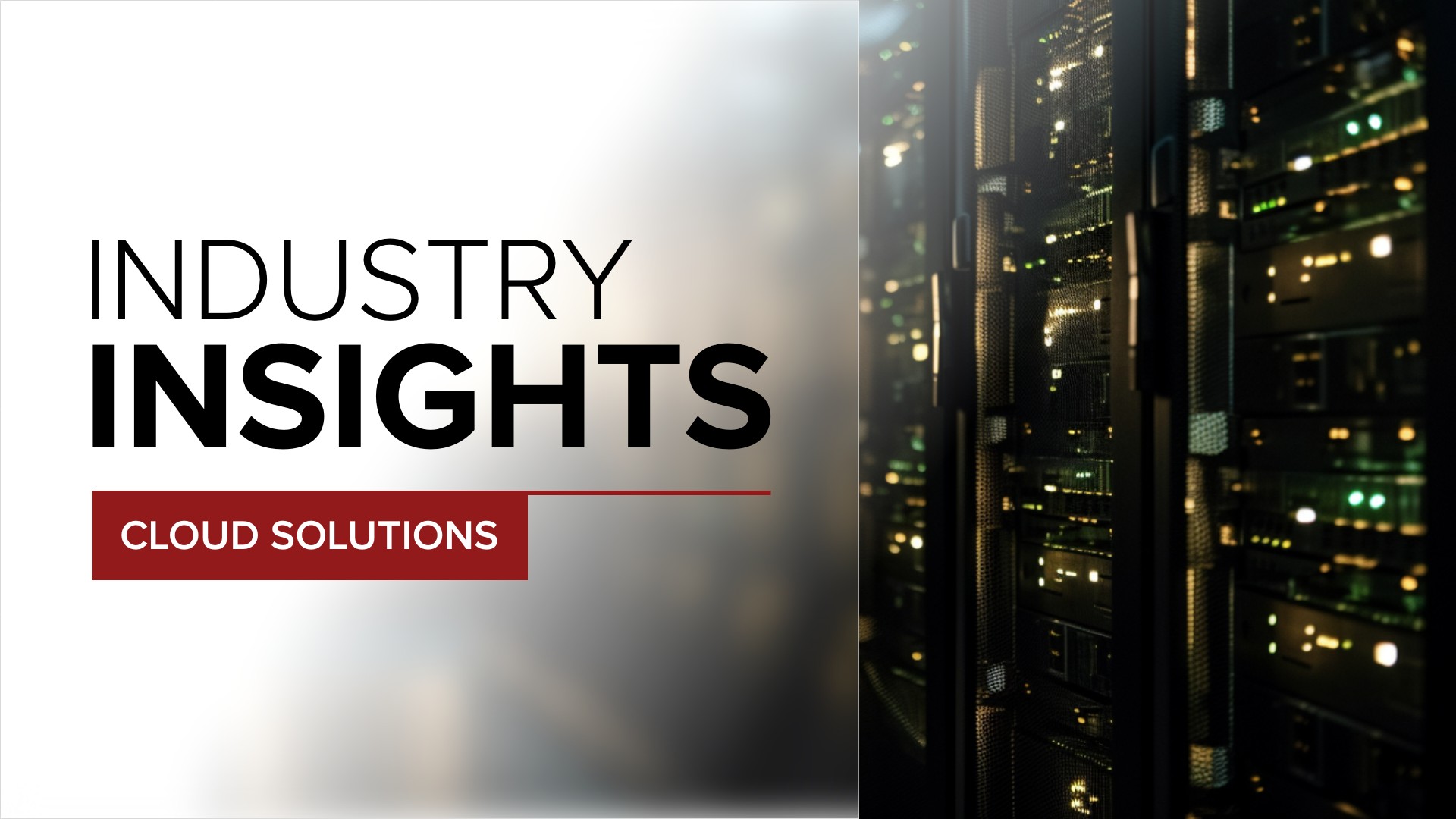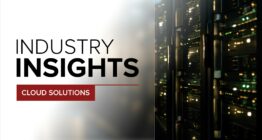Industry Insights: Cloud adoption, pain points and security in broadcast

Subscribe to NCS for the latest news, project case studies and product announcements in broadcast technology, creative design and engineering delivered to your inbox.
As the broadcast and media industry evolves, adopting cloud workflows and transitioning to cloud-based production has become a central focus for many companies.
In this Industry Insights roundtable, we speak with industry vendors to discuss the current pain points, the progress of cloud adoption by broadcasters and the significance of security in the journey towards cloud production.
We delve into the challenges and opportunities that lie ahead as broadcasters and media companies navigate the ever-changing landscape of cloud technology.
What are the current pain points for cloud media production?
Jon Finegold, CMO, Signiant: The biggest challenge we see is around the economics — not just cloud storage, compute and egress costs but many underestimate the costs of homegrown solutions. Engineering teams lean towards building it themselves and the cloud providers offer many powerful tools to build anything you can dream up but media operations teams need speed and agility. Working with off-the-shelf SaaS solutions can help make costs much more predictable and, if designed right with modern APIs, still offer engineering teams the ability to extend and integrate products to meet specific business requirements.
Venugopal Iyengar, deputy COO of digital, Planetcast International: The pain points of moving to the cloud include security issues, latency issues, bandwidth and storage capacity. However, technology providers with proven expertise and gold standard, proprietary infrastructure are building solutions that overcome all these hurdles, ensuring a greater sense of trust in cloud workflows among the media and entertainment community. It’s also important that cloud solution vendors deliver predictable project costs and seamlessly enable multiple plug-in integrations for cloud production and support workflows to enable a better customer experience with more transparent pricing.
Grigory Mindlin, general manager of broadcast, Disguise: We’re in a transitional period, companies are trying to switch to the cloud, but they also have a lot on prem. From a preparation and cost standpoint, many broadcasters may not be ready to move the whole system to the cloud yet, so lots of the current pain points are around working on prem and the cloud at the same time.
Sam Peterson, COO, Bitcentral: Every organization will have a different answer to that. Certainly, many of our customers have very unique use cases. Ultimately, our main focus is on the production and delivery component. Of course, the cloud is absolutely essential where consumer delivery is concerned.
Stephen Tallamy, CTO, EditShare: Cloud technologies are now mature — that is not the issue. Where we still see resistance is in seizing the opportunities that the cloud brings to transform workflows and business processes. Whilst you can lift and shift to the cloud as a first step: you need, as a business, to re-evaluate what you need to do to serve your users creatively and cost-effectively, and develop the workflows that will achieve that.
Rick Young, SVP and head of global products, LTN Global: There are two key pain points that I think are posing challenges for organizations across the value chain. One being the ability to reliably and predictably deliver low latency feeds into cloud environments, and the other being able to affordably deliver produced events and linear channels from cloud environments to final destinations. Both scenarios can be neatly handled with a mission critical global IP network.
Jonathan Smith, cloud solution area expert, Net Insight: There are three competing technical parameters that productions fight with, latency, quality and bandwidth. Latency and bandwidth are often detracting factors when using a cloud environment, so maintaining quality in a cost-effective way can be a challenge.
Miroslav Jeras, CTO, Pebble: As a technology partner we understand one of the pain points is the potential for security breaches and the need to protect sensitive media content while it is stored and shared in the cloud. Additionally, the lack of standardization of cloud services can make it difficult for media production teams to manage live signals and minimize latency.
Julián Fernández-Campón, CTO, Tedial: There are many, but the two more important pain points are cost: How much I will have to pay for my cloud media operation and what are the variable costs, and efficiency? Will it work as seamlessly as on prem does?
David Rosen, VP of cloud applications, Sony Electronics: Two major challenges are moving big files around and finding them when you need them. Big files and unpredictable internet conditions make that a challenge. Solutions like Sony’s Ci Media Cloud reliably deal with these conditions by using file transfer acceleration, built in retry mechanisms and delivery notifications.
Raúl Alba, director of solutions marketing, media and cloud, Avid: While media production in the cloud is gaining traction, there are still several pain points in increasing its adoption. These include not only in-house knowledge about cloud technologies to maintain production systems, but also media companies’ recent investments in on-prem technology and understanding or the true total cost of ownership of on-prem systems. There are also concerns about security and reliability and the complexity of hybrid workflows, particularly in the way media is ingested and egressed.
Frederic Petitpont, co-founder and CTO, Newsbridge: Discoverability of media assets is a large pain point. Many customers want the ability to search through their content in the same way they use Google. However most MAMs lack the full text (semantic) search capability to enable this.
Charles d’Autremont, CEO and founder, Cinedeck: Bandwidth limitations present challenges in remote work and disrupt workflow continuity, but external issues like this aren’t always easy to rectify. At the ingest end of the chain, it is important that delays are minimised so that editors can get to work straight away. By recording ISO streams directly to the codec required for editing and file delivery, it is possible to dramatically reduce the time taken from capture to initial editing.
Chris Kelly, solutions manager for production workflows, Ross Video: Pain points are mostly a function of expectations for how the system will behave. There’s an expectation that there will be delay; this isn’t like SDI or IP in an on-prem control room where signals are sent and received within a frame of delay, and I think that’s mostly accepted. Where it gets complicated is when you have on-set displays being fed by a cloud resource, and then fed to the ground only to be shot by a camera that’s then sent back to the cloud for a program output; that delay profile gets a lot trickier.
Geoff Stedman, CMO, SDVI: The most often mentioned challenges with cloud media production are related to latency, especially for live production. Depending on location, limited connectivity to the cloud, particularly for moving large media files, can also be a bottleneck.
Where are we in terms of adoption?
Jon Finegold: Prior to 2020, we saw steady growth of cloud adoption year over year. Then when the pandemic hit we saw an explosion of cloud adoption with nearly five times the amount of data being moved into and out of the cloud on the Signiant Platform. Most media companies are now using the cloud in some way and most remain in a hybrid state with some workloads in the cloud cloud and some on-prem — a trend that looks like it will be the norm for the next several years.
Venugopal Iyengar: Increasingly, traditional broadcast customers are looking to migrate to hybrid models that build on the security of on-premise solutions with the flexibility and scalability of cloud. This approach can also have OpEx benefits over fully cloud based approaches. While we’re seeing media brands embrace hybrid models as a flexible and logical approach to cloud adoption, it’s worth noting that the technology is mature — cloud-based production, media management and distribution workflows are in action today, and proving to be successful on the global stage.
Grigory Mindlin: The world’s biggest broadcasters and media companies lead the way as they have the budgets to adopt first and take chances. I believe those companies are somewhere like a third of the way, meaning they’re doing some things in the cloud. It’s not ubiquitous, I can’t think of a single broadcaster that’s moved everything 100% onto the cloud, they’re all somewhere along the journey.
Sam Peterson: We’re in the early stages of cloud production, certainly compared with archive and asset management, which are much further developed. We’ve seen some experimentation with limited live workflows, such as production switching, but it’s early days for sure.
Stephen Tallamy: Inevitably we are in a time of transition. We have users who have enthusiastically embraced cloud workflows — including the remarkable power of cloud-hosted editing — while some see the cloud as a backup and archive for now, and others prefer to keep their media on premises. As production and post companies are challenged to find new solutions, so the advantages of the cloud will become more attractive.
Rick Young: Cloud workflows have evolved considerably over the past couple of years. Broadcasters are no longer just experimenting with new ways of working, they are embracing and deploying cloud-based solutions across real-word, live production environments. Customers are adopting cloud-enabled solutions to drive scale and flexibility, and increasingly, as a means of enabling efficient content versioning to cost-effectively reach fragmented audiences through global multi-platform digital distribution strategies.
Jonathan Smith: In recent years we have seen a massive increase in the number of live events produced by our customers; a lot of these increases have been associated with lower end productions. In many cases these have been completed in a cloud environment, so the adoption has accelerated quite rapidly.
Miroslav Jeras: With the advent of remote productions, broadcasters are leveraging the cloud to increase operational efficiencies — since a reduction in costs is a natural by-product of no longer sending staff out on location. As experts in playout automation, we know there is also a desire to use virtual playout in the cloud for offering greater flexibility and spinning up pop up channels quickly. However, we also know that for now many broadcasters want to adopt hybrid workflows that leverage the use of legacy equipment on-premises whilst deploying cloud-based technologies.
Julián Fernández-Campón: It really depends on the use cases. Some use cases like localization, collaborations and remote production are widely used already, and other use cases that are quite dependent on the size of the media post-production are getting less adoption.
Raúl Alba: Many broadcasters have already adopted cloud technologies for some parts of the workflow, like distribution or playout, and now they are slowly expanding adoption to other parts of the workflow, like media production. Cloud adoption is not running at the same pace across all geographies, with North America and Northern Europe at the forefront of adoption.
Frederic Petitpont: Not where we would expect it to be. The hybrid approach of part-cloud and part on-premises remains popular with broadcasters. We know from the International Federation of Television Archives’ latest annual research that more than 35% of respondents fear the cloud will be more expensive, almost 30% believe they already have sufficient storage, so have no need for the cloud, and almost one-quarter of respondents had concerns about data protection.
Charles d’Autremont: The media and entertainment industry has seen a rapid growth in the adoption of cloud technology for all aspects of workflows. Production and post-production organisations have shifted to cloud because of its flexibility, scalability, and accessibility. The industry is still in the early stages of cloud adoption, but with the development of more solutions and tools, this will only increase and eventually become the norm.
Chris Kelly: I’d say we’re in the early adopters’ portion of the curve as we’re all watching things produced in the cloud, and most viewers wouldn’t know the difference. REMI has been around for several years, and many of those principles are at least parallel with cloud production which has I think accelerated some adoption. I think mass adoption is still in our horizon though it’s getting closer, and how we think about cloud will probably shift and adjust as we get closer to cloud production being a common reality.
Geoff Stedman: Where we see a lot of adoption of the cloud for media production is with edit workflows. There has been a lot of innovation with cloud-based editing software so that an editor can access and edit content from anywhere without having to move content to a local computer.
Where is security in your customer’s mindset?
Jon Finegold: Security concerns are at an all-time high and we hear it over and over from the market. In fact, it’s been a good growth driver for the Signiant Platform, driving companies to finally retire legacy solutions like FTP, harddrive workflows and older software. Customers require cloud and SaaS services that are built with a “security first” mind set.
Venugopal Iyengar: For an existing linear channel, security can require a paradigm shift when moving to cloud, as customers may need to re-validate compliance with security requirements. Security will always be a top priority for media companies, especially when handling unreleased content. Increasingly, it’s possible for cloud to be at least as secure as on-premise and hybrid production models.
Grigory Mindlin: Security is really important. As it moves to the cloud, there’s been even more secure protocols. Some of our customers have increased their security and adjusted how they provide access to their network for vendors accordingly.
Stephen Tallamy: Concern over security is perhaps the biggest reason for the reluctance to move further into the cloud. It is really important to develop very strict protocols not only to protect against intellectual property theft but also against commercial cyber threats like ransomware. That may mean doing things which are counter-intuitive: remote editing is a standard today, but post houses are finding they need to establish connections from the center out rather than opening up portals for editors to log themselves on.
Rick Young: Security has been at the forefront of the agenda for our customers dating back more than a dozen years when we first started enabling cloud based, IP transmission workflows. This continues to this day but with the right core technology and understanding of business needs, security can remain a concern but not a blocker for our customers.
Jonathan Smith: Security is at the front of most consensus customer minds. As we move into the IP transport domain, especially when over public connectivity, the need to secure feeds and hand-offs is of the utmost importance.
Miroslav Jeras: Security is at the top of the priority list. The current political landscape means cyber security threats and concerns of being on the receiving end of a hacking attack are at an all-time high. Customers want security of their content, especially content they can monetize, and they want full transparency around what measures are in place for disaster recovery when placing a system in the cloud, where their on-premises infrastructure is also protected.
Julián Fernández-Campón: They are all aware that security is a must and they are always looking for solutions where security is embedded within the system and the vendor itself.
David Rosen: We’ve seen a dramatic shift in customers’ perceptions of the security of the cloud. There used to be a sense that if your content wasn’t in your own facility then you couldn’t be sure it was safe. Time and experience has taught us that on premise facilities are no safer than cloud infrastructures.
Raúl Alba: Security is top of mind, and delegating this to third party vendors like cloud providers is not something all of them are ready to do. One interesting thing is that the security of the average broadcaster is less strict than the standard security in the public cloud. Cloud infrastructure vendors have a business because their solutions are secure.
Frederic Petitpont: Security in the mind of our customers relates to trust when working with SaaS. Pentesting can be quite expensive, and that’s also why they are working with SaaS. Security issues are much less likely with cloud editing workstations, and customers are able to use the RBAC (Role-based Access Control) authentication mechanism to provide access to content.
Chris Kelly: It was a lot harder (though not impossible) to hijack an analog signal. In recent years, there have been some high-profile and not-high-profile incidents that influenced the on-air product. I believe all customers see these incidents and recognize that we’re living in a new world where people don’t necessarily work within the four walls of their office, but that very special attention needs to be put in place to mitigate the security risk that’s introduced when you open that door.
Geoff Stedman: Security is always top of mind for our customers. All media companies want to protect their content as well as tightly control who has access to their content. Fortunately, there are well-architected methods for securing cloud-based content and workflows to ensure that work can be done by only those who are authorized.
Subscribe to NCS for the latest news, project case studies and product announcements in broadcast technology, creative design and engineering delivered to your inbox.







tags
avid, Bitcentral, Broadcast Workflow, Charles d'Autremont, Chris Kelly, Cinedeck, David Rosen, Disguise, EditShare, Frederic Petitpont, Geoff Stedman, Grigory Mindlin, ip workflow, Jon Finegold, Jonathan Smith, Julián Fernández-Campón, LTN, MAM Workflow, Media Asset Management, Miroslav Jeras, Net Insight, Newsbridge, Pebble, Planetcast International, Raúl Alba, REMI, Remote Production, Rick Young, Ross Video, Sam Peterson, SDVI, Signiant, Sony, Stephen Tallamy, Tedial, Venugopal Iyengar
categories
Broadcast Engineering, Broadcast Facility Technology, Content, Content Delivery and Storage, Content Libraries, Heroes, Industry Insights, Voices